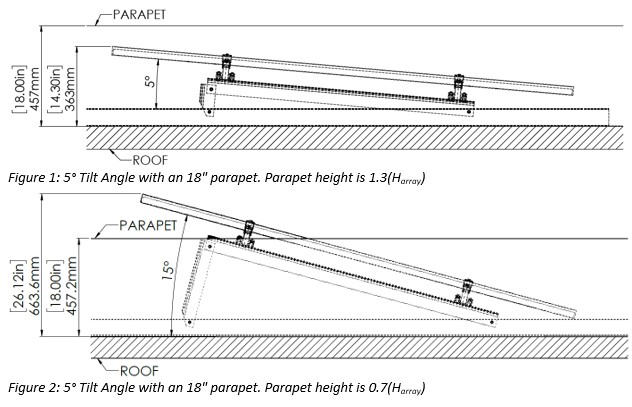Designing PV systems with a higher tilt angle than the common 5° or 10° systems has many benefits. Most notable being increased production per PV module in North America. Higher tilt angles generally come with the expectation of higher pricing, higher ballast requirements and higher global loading. While there are valid reasons behind this assumption, it is not always true. In most situations, you may be able to reduce the total system price, roof loading and ballast requirements.
Doesn’t Always Mean More Ballast
On flat roof systems, using a wind study is common for wind pressure calculations. The difference in wind load between varying tilt angles comes from pressure coefficients, which increase as the tilt angle does.
A large factor in the calculation is the parapet height, which has been shown to increase conical vortex wind loads. The parapet factor is taken based on the relative height of the parapet and the panel.
When a parapet is present, increasing the tilt angle and height of the panel off the roof deck will reduce the wind load impact of the parapet. This means that the increase in ballast relative to increasing tilt angles is non-linear, often with minimal to no increase in ballast requirements per module.

Reduce Global Loading
Typically a higher tilt angle results in an increased row spacing between modules, distributing the them over a larger footprint. With the minimal impact on ballast requirements already established, they are further amplified when spread over a larger area.
Increasing the row spacing can be a great way to reduce the global loading on a project with building structural limitations.
Lower Your Total System Costs
Increasing the tilt angle on your PV system is a great way to save on total project costs. Meet your power generation needs with fewer modules, lower costs in every area of the project from mechanical to electrical supply and installation.
When planning your next solar project, consider using higher tilt angles without the expectation of higher material costs, labour, ballast requirements and roof loading.

